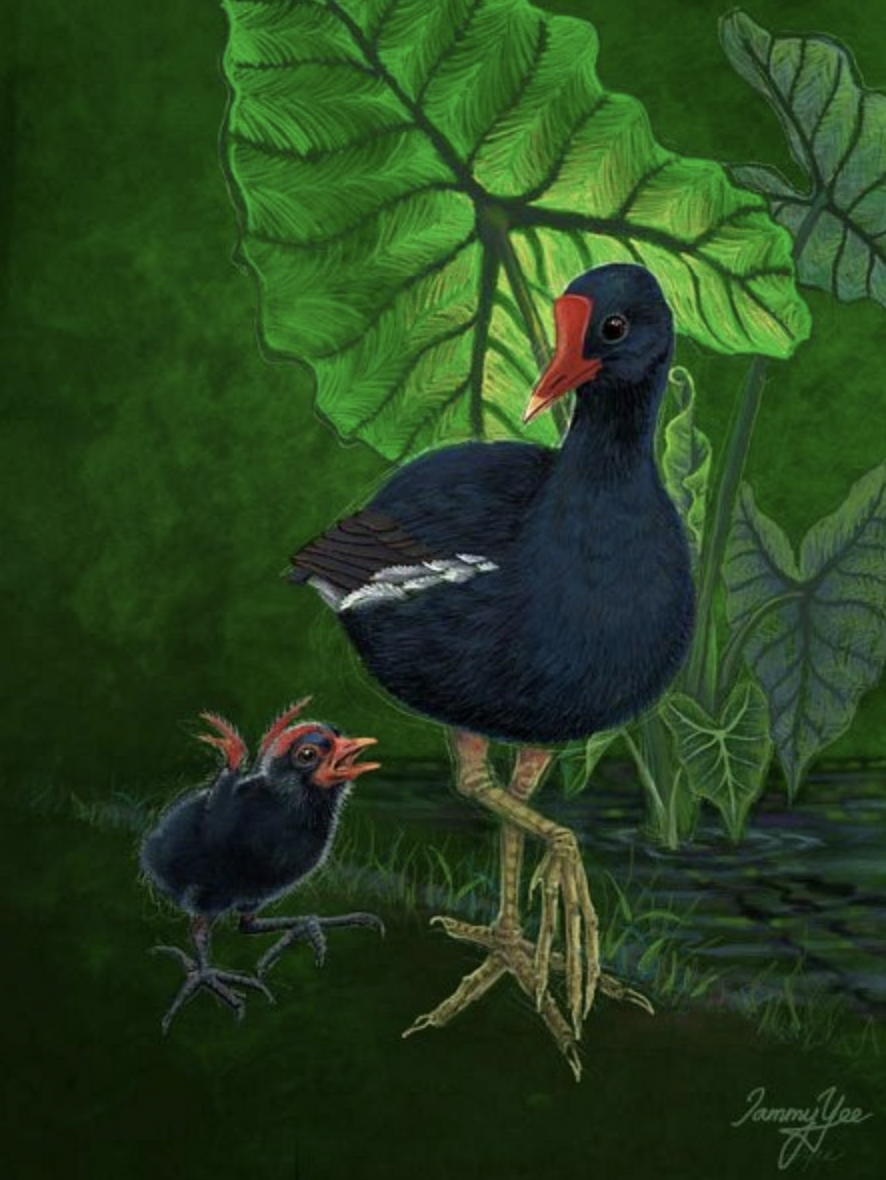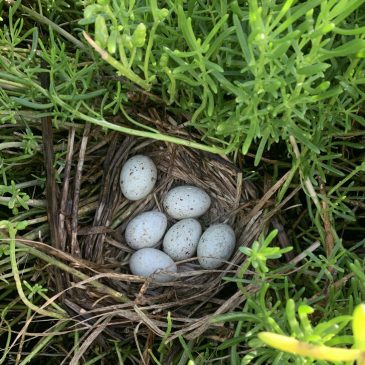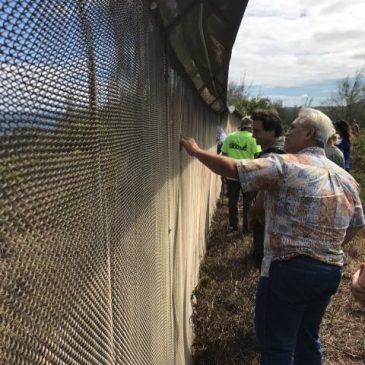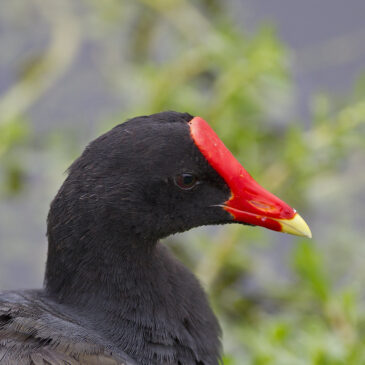
If you live on the Island of Kauaʻi, the most northerly of the main Hawaiian Islands, it is easy to forget that the ʻalae ʻula is one of the rarest waterbirds in the world. They are relatively easy to spot on Kauaʻi and they are seen in some unexpected places–like around golf course water features, or in the tiny pond behind the county recycling bins in the tourist hotspot of Poʻipu! But to keep seeing this engaging bird, we need to take concerted action on multiple fronts.
ʻAlae ʻula or Hawaiian Common Gallinule (Gallinula galeata sandvicensis) is an endemic subspecies of the Common Gallinule of North and South America. Once found across most of the main Hawaiian Islands, it is now restricted to only two islands, Oʻahu and Kauaʻi.
This waterbird with the fiery forehead has a strong place in Hawaiian culture and mythology. One moʻolelo (story) recounts that they got that bright red frontal shield when they stole fire from the God Maui to give to humans, and were branded for their misbehavior.
Distribution & Range
One of the largest populations of ʻalae ʻula is found at James Campbell National Wildlife Refuge on Oʻahu. There, water levels can be managed and predator control efforts help protect the birds from the cats, rats, mongoose, pigs, dogs, bullfrog and barn owls which prey upon these birds. Hanalei National Wildlife Refuge is another stronghold, and several other refuges and watercourses on the two islands support ʻalae ʻula.
The distribution of ʻalae ‘ula on Kauaʻi and Oʻahu is strongly influenced by their specific habitat needs, particularly when nesting. The resurgence of kalo (taro) farming is playing a role sustaining this culturally important bird. Studies on land management in the Heʻeia National Estuarine Research Reserve have found that the shifting mosaic of disturbance in lo'i kalo (taro fields) creates great habitat for the birds, especially the unflooded fallow patches used for foraging and the mature kalo stands used for nesting.
Habits & Habitats
‘Alae ‘ula are found mostly in lowland freshwater wetlands. Breeding can occur year round, but peaks March through August and is influenced by water levels. Their nests are platforms generally well hidden amidst the aquatic vegetation.
Conservation partners continue to learn about the natural and life history of ʻalae ʻula. Research shows that ʻalae ʻula tend not to disperse very far, reinforcing anecdotal reports of the sedentary nature of the birds. Studies have also found that drainage infrastructure likely contributes to habitat connectivity. This has implications for conservation, management and potential reintroduction of the birds to new locations.
Conservation
The decline of ‘alae ‘ula on the islands is a story that also unfolded for many of Hawai'i’s native birds, whether found in wetlands, forest, or coastal habitats. They are relatively secretive birds, making them harder for people to spot and challenging to count completely. Current estimates (Paxton et al., 2021) put the population at less than 1,000 birds. This is a boost from an estimated low of 60 birds in the 1960s when it was listed under the Endangered Species Act, but still leaves the long term survival of ‘alae ‘ula in question. Today, ʻalae ʻula are listed as endangered at the state and federal level and have a recovery plan in place.
While the population increase over the past half-century is encouraging, ʻalae ʻula are vulnerable to short term threats such as botulism which can have an outsized impact on small, isolated populations. To help ʻalae ʻula, managers need to know more about the birds’ movements, and what is behind the biggest losses of young and adult birds. Partners also are looking ahead at how to sustain habitats into the future, including how to mitigate for sea level rise and increased wetlands salinity associated with climate change.
Action for ʻAlae ʻula

© Hawaiʻi Department of Land and Natural Resources

Photo Bradley Bales

Photo courtesy of Hawaiʻi Department of Land and Natural Resources

Dan Clark, USFWS
Due to low population numbers, relatively secretive habits, and being found only on two islands, many people no longer see ʻalae ʻula in their daily lives. Pacific Birds is working with partners to reacquaint the bird with old friends and new through education, an action planning process, and habitat protection efforts that aim to make ʻalaeʻula a more common sight.
